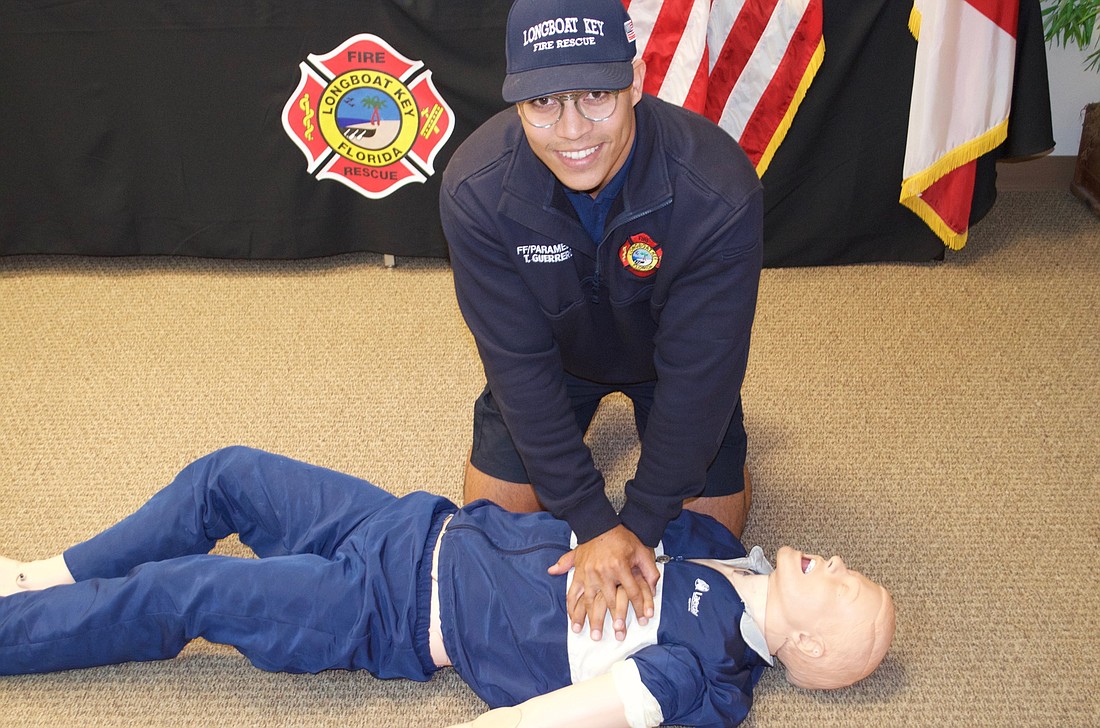- April 25, 2024
-
-
Loading

Loading

In the last four years, more than 2,000 people have taken Longboat Key Fire Rescue's hands-only CPR classes.
With that many people on the island ready, and able, to help in an emergency, positive outcomes become more likely.
“You know CPR is going to save lives,” said Lt. Bryan Carr. “If a person is given CPR before we get there, then he is three times more likely to survive.”
Carr and his fellow firefighters hope to add to that number. For the fourth consecutive year, Fire-Rescue will hold a hands-on CPR class for island residents during the next three months. The 45-minute class sessions began Jan. 23 and will run monthly through March 15 at Town Hall. Class times are 10 a.m. and 1 p.m. and average 25 to 30 people.
Carr said the class was started out of need.
“We were getting CPR calls, and people were just standing around,” he said.
Even though the response time of the fire department is five minutes to any part of the island, tissue death can begin within six to eight minutes after cardiac arrest, Carr said.
“It is important to get the blood flowing,” he said.
CPR is an emergency, life-saving procedure than combines chest compressions, often with breathing resuscitation, though the town's class eliminates the mouth-to-mouth element. The goal of hands-only CPR is to restore partial blood flow to the brain and the heart, reducing the risk of brain or organ damage.
Ideally, Carr said he likes to see 120 chest compressions a minute. But given the fact the average of a Longboat resident is 70 or older, he recognizes that that cannot always be done. The chest compressions can be exhausting, though if more than one person is trained, teamwork can be employed.
“Anything you do is good,” he said. “It is better than nothing.”
Tirso Guerrero, a department firefighter and paramedic, said the department responded to a cardiac arrest at a local condominium recently in which the victim's wife administered CPR while first responders were on the way.
“He went to (cardiac) rehab and is fine,” Guerrero said.
Students of the free class will also be shown how to operate an AED device, Carr said. AED is short for Automated External Defibrillator and can increasingly be found in public buildings, private businesses and condo complexes.
The AED device sends an electric shock to the heart to stop arrhythmia, or irregular heart beat, but bears little resemblance to the machine often featured on TV medical dramas.
The device consists of two pads. One is placed on the right just below the collarbone and place the other on the lower left side. An internal processor analyzes the heartbeat and delivers an appropriate electrical shock to recapture normal rythym.
“This class is quick and painless,” Carr said. “There’s nothing worse than feeling helpless.”